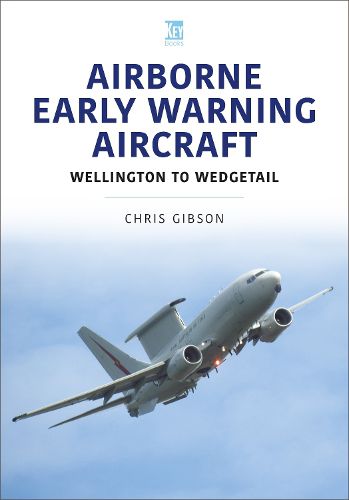Airborne Early Warning Aircraft
Chris Gibson

Airborne Early Warning Aircraft
Chris Gibson
Airborne early warning (AEW) has been used since 1941 but, until the computer revolution of the late 1970s, was restricted in its operation to maritime use. Since the 1980s, AEW aircraft have become the must-have force multiplier of any first-rate armed force and as such are worthy of analysis. From the RAF's Wellington ACI of 1941 and the Elgar operations of 1944 to the Boeing E-7 Wedgetails that will enter service next year, the UK has paved the way in AEW technology, albeit not with the greatest success. The Americans, following Britain's lead and taking a hammering from the kamikaze, modified a snorkel-detection radar to detect aircraft and developed the first operational bespoke AEW aircraft with Project Cadillac. That radar would remain in service on the RAF's Shackleton AEW2 until 1991 when it was replaced by the Boeing E-3D Sentry AEW1 in RAF Service. In the intervening period, many attempts to produce an AEW system for use over land failed, until the E-3 Sentry came on the scene in the late 1970s. This became the benchmark for AEW aircraft and is only now being replaced by Boeings E-7 Wedgetail. On the maritime front, Grumman's E-2 Hawkeye became a popular choice, especially once an overland capability was achieved in the 1980s. The Royal Navy's loss of ships in the South Atlantic prompted the resurrection of earlier work on a helicopter AEW system that became the Sea King ASaC7 and today's Merlin Crowsnest operated from the Queen Elizabeth-class aircraft carriers. Elsewhere, the Soviets produced the Moss, based on the Tupolev Bear via the Cleat airliner but the subsequent Beriev A-50 Mainstay has become the AEW platform of choice in non-aligned countries such as India. China has taken the bit between its teeth and having bought a few Mainstays, has developed a plethora of AEW aircraft in the last 20 years. Due to the massive power requirements of radars and their associated computers, AEW aircraft were large, generally converted airliners. Since the mid-1990s a new generation of smaller types based on feeder liners and bizjets have appeared and make the role accessible to smaller air forces. In the vanguard of this is SAAB, whose Erieye systems have been applied to a variety of aircraft. AUTHOR: Educated at Auchinleck Academy in Ayrshire, Chris Gibson read Geology and Mineralogy at University of Aberdeen, graduating with Honours in 1984. Chris has worked in the oil exploration industry since 1985 and his work has taken him all over the world, with the added bonus of the occasional glimpse of unusual aircraft. In 1978, his interest in aircraft took Chris into the Royal Observer Corps where he represented his group, area and country in aircraft recognition competitions between 1980 and 1991. On the standing down of the ROC in 1991, Chris began researching historical aviation and has written several books on unbuilt projects, particularly guided weapons, transports and airborne early warning. Chris and his wife, Kirsten, live in the North East of England.
This item is not currently in-stock. It can be ordered online and is expected to ship in approx 4 weeks
Our stock data is updated periodically, and availability may change throughout the day for in-demand items. Please call the relevant shop for the most current stock information. Prices are subject to change without notice.
Sign in or become a Readings Member to add this title to a wishlist.


